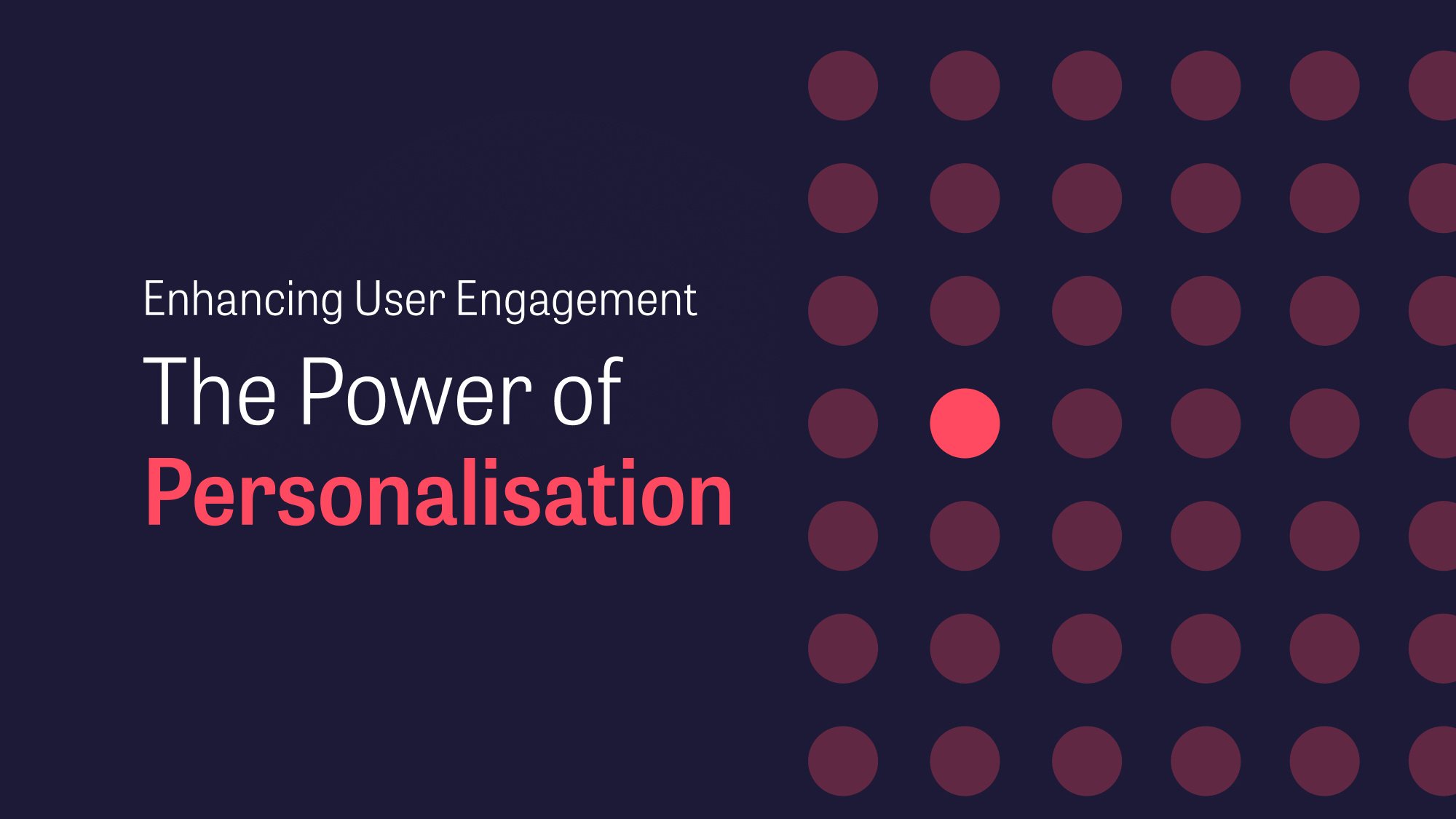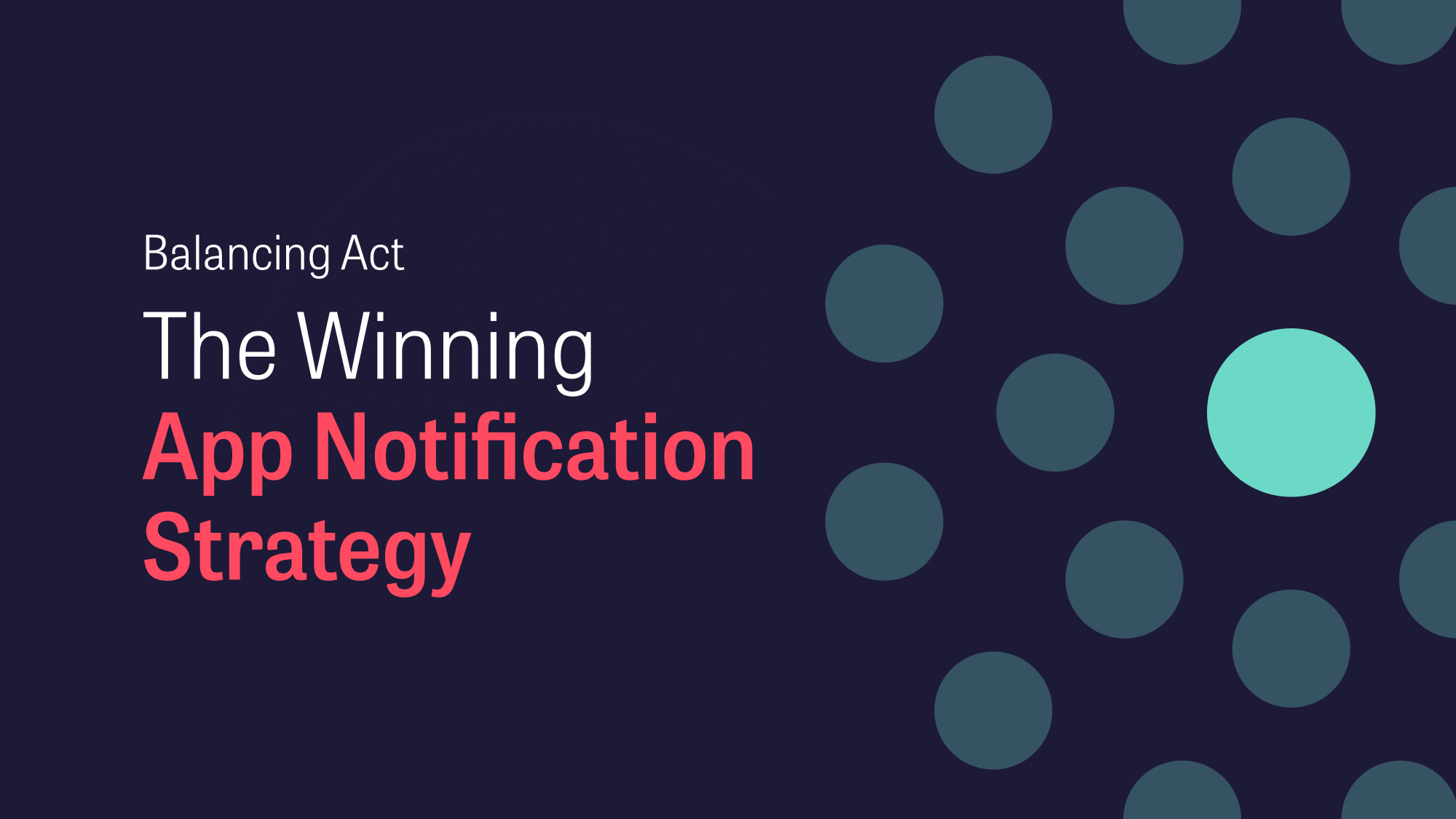
At Shape, we look at app development as a holistic process that starts with an initial idea, but it doesn’t end with the app release. Ensuring the success of the app requires flexibility and a strategy that evolves over time and is continuously optimised to fit market needs and technological changes. In this article, we will deep-dive into 3 actions that play a crucial role in ensuring the long-term success of an app.
Thrive in the App Market: Three Areas You Can't Ignore
As for any business, you must stay aware of advancements in the app market and be proactive in implementing those changes into your app and strategy. Doing so is what prevents it from becoming obsolete. The user experience poses a great importance in how the app is perceived and the apps adopting the latest technologies gain advantage over those that don’t – slowly becoming irrelevant, especially in a competitive industry.
In the following section we will walk you through the three key areas that our experience over time have shown us, that you can not afford to miss out on.
1. Continuous market research: Why and how it is done
Why engage in market research? Take a bit of Moore’s law and mix it with the Kano Model and you’ll have your answer right there. Not familiar with the concepts? A short introduction:
- Moore’s law states that every other year the number of transistors in a chip doubles, this has roughly been true for the last 60 years
- The Kano Model is a framework used for product development and customer satisfaction, categorising features into basic, performance, and delight attributes based on their impact on customer perception and loyalty. It helps prioritise features that can generate the most value and customer delight. It states that over time a delighter will become a performer which in turn will become a basic feature. E.g. over time the features will “lose” their perceived value
So, what does this mean?
This means that the technical limitations to a feature will not be the same in just one year as they are today. Next year's new features will come and solve the value proposition for users but in a way that is perceived to be more valuable than the current one. This will not only add to the perceived value of the new feature but equally subtract from that of the old. In other words, the value of your app will most likely decline over time if you do not keep up.
How do you keep up then?
Engaging in ongoing market research is essential to stay competitive and be up-to-date on the latest trends, ensuring that the app evolves in tandem with the market. Market research involves diving into various dimensions that continually shift over time, including users and their preferences, cutting-edge technological advancements, direct competitors, and innovative disruptors in the market. Also, analysing statistics on mobile usage offers valuable insights and serves as a powerful tool for understanding the landscape better. When trying to understand the users, there are different ways in which this research can be conducted.
Market research plays an important role in strategising at various levels, encompassing decisions related to app features and roadmap decisions, app or brand positioning in the current market, and other marketing challenges. By gaining a complete understanding of the market and the preferences of current users, strategists can properly apply the most effective tactics and strategies to improve user retention and engagement. Valuable insights generate value in optimising the app’s features, user interface and overall experience which ultimately leads to an improved app that targets the audience's needs and preferences.
2. Scalability: Why you want to prepare for this from the get-go
When preparing for the future, it’s essential to prioritise making a scalable solution. Embracing a scalable architecture ensures that the app can accommodate design and development changes without the need of a complete overhaul. By incorporating a well-designed scalable architecture, the app can expand effortlessly and adjust to evolving requirements as time progresses and all at the same time avoid building technical debt. This sounds like common sense, so why is it even worth mentioning? Our past +13 years of experience within the app industry has shown us that this is often an area that is overlooked when starting up a project. There can be several reasons for this, but some of the most common ones are:
- A narrow focus on timeline and/or budget for the first set of releases
- Not understanding the possible future consequences of not doing it
- The scope of the app being widened unexpectedly
The consequence of this all being the same – you have a product that you and your users love, however, you can not release the features and functionalities that you would like due to an unscalable foundation of the app. This can lead to dissatisfied employees as well as customers as the competition might not find themselves in the same pinch.
So, what is the solution?
The first thing that is of significance is to be aware of the potential pitfalls and the importance of having the right, scalable, foundation.
Secondly, we at Shape have good experience with implementing two techniques in order to mitigate the challenges of scaling an app;
- Modular components that can be maintained asynchronous
- Creating a Backend For Frontend (BFF)
Reaping the Benefits of a Modular Component Setup
In short, running a modular component setup will allow you and your developers to work asynchronously on parts of the source code, meaning that you can isolate your efforts to just a specific part of the app. Furthermore, if this is done right, it will allow you to easily plug in new components to the overall architecture, and thus adding new and unforeseen features. One of the companies that have been very open about their adoption of this way of working is AirBnB, who have gained several benefits from this. At Shape we have experienced the following benefits ourselves.
One codebase – multiple apps: Tailoring App Flavours to Specific Target Audiences
By building apps from a modular framework we can reuse components across flavours of apps. The flavour of an app is optimised for a specific target audience, such as users in a specific region or users in a specific industry. It can also be a variant of an app meant for internal use and one meant for public distribution. An Example of this is the TV2 Regions app which won several awards, including a Lovie, for its architecture.
Increased confidence: Enhancing Test Accuracy by Minimising External Reliance
Modular components are suited for a range of use cases. As such we can use the components with live production data when the app is released, or we can use mocked data in other scenarios. This is beneficial for the developers. For example, at Shape we use mocked data in our unit tests to ensure the tests are not reliant on external services or hardware. This decoupling also comes in handy during the development as we can iterate on features without relying on external services.
Accelerating Team Onboarding with Modular Applications
By building modular applications it becomes straightforward to build Dev Apps, apps that we use for iterating on features during the development. Using Dev Apps, we can launch directly into specific features of an app. For example, we can iterate on the login flow without needing to log in and out every time we run the app. This means that team members can become experts in a specific part of the app and don’t need to understand the entire product and all corners of the business before they can start contributing to the codebase.
The Benefits of BFF: From Standardisation to Scalability
The BFF is another concept that will allow you to scale. When building app ecosystems it has for a long time been known that point to point integrations come with a set of challenges. Building business services that the clients can then integrate to has become the norm. However, at Shape we have found that more often than not these business services are not made to support an app’s specific need, but work on a more general level. Therefore, in order to not place too much business logic on the app clients (iOS & Android) in order to make the data fit the needs, we have seen great value from creating a BFF.
The purpose of the BFF is to aggregate, process, and package data from various business services, ensuring that the data is in its optimal format when received by clients, in this case, the app.
In this context, the BFF serves as an app-specific component. It offers the following advantages:
- Standardised Data Across Both Clients:
Enables standardised data across the two clients. - Scalable Computational Power:
The BFF's placement on a cloud service allows for scalable computational power. This mitigates peak loads and protects the underlying business services. - Centralisation of Presentation and Business Logic:
Centralises presentation and business logic development, reducing the need for duplication across both clients. This brings several positive effects, including: - Reduced Error Margin:
Implementing logic only once, across different code languages, lowers the chance of errors, enhancing the overall stack quality. - Error/Bug Correction in a Controlled Environment:
Ability to rectify errors/bugs within an environment under our control, without the need to deploy new versions to app stores that undergo reviews, thereby avoiding process delays. - Caching of Non-User-Specific Data:
Caches non-user-specific data like prices, reducing traffic to business services and improving app response times, as such data need not be requested each time. - Reduced Data Load on the Client:
Decreases the volume of data to be fetched and processed by the client, consequently optimising response time and user experience.
3. Proactive maintenance: Why you can’t afford not to be proactive
Maintenance, a vital component of app development, is often unfortunately demoted to a position of lesser importance by product and business owners. The reasons for this stance might be speculative, but the fact remains that maintenance doesn't possess the allure of a novel, dazzling feature. Instead, it's often viewed as a mundane aspect of the development process. Nonetheless, underestimating the significance of proactive maintenance can have substantial repercussions. These consequences come in various forms and can be categorised into two primary areas; User Experience and Cost.
Compatibility, Security, Performance: The Three Pillars of User Satisfaction
Maintaining a high-quality user experience is crucial to the sustained success of any app. A reactive approach to maintenance can inadvertently erode the user experience over time. As the technological landscape evolves, failure to proactively update and optimise the app can lead to compatibility issues, security vulnerabilities, and performance bottlenecks. These factors can collectively contribute to a diminished user experience, causing frustration, dissatisfaction, and ultimately leading to user churn.
When users encounter glitches, crashes, or delays in app functionality, it tarnishes their perception of the app's reliability and professionalism. A neglected app with outdated features, unaddressed bugs, and a sluggish interface can quickly lose its appeal, compelling users to seek alternatives that offer a smoother and more polished experience. This transition from being the go-to app to an app that's discarded due to consistent issues, highlights the necessity of proactive maintenance.
The Cost-Saving Magic of Proactivity
Reactive maintenance can also result in substantial financial implications. Ignoring the need for regular updates and optimisations can lead to a situation where the app's codebase becomes outdated, convoluted, and difficult to manage. This accumulates what is commonly referred to as "technical debt," where the cost of addressing neglected maintenance compounds over time. The longer these issues persist, the more complex and resource-intensive rectifying them becomes.
Fixing issues reactively often requires more time, effort, and resources than addressing them proactively. Over time, the need for extensive rewrites or overhauls may arise, leading to increased development costs and potential downtime for the app. Moreover, as outdated components accumulate, compatibility with newer technologies becomes challenging, potentially necessitating comprehensive reengineering efforts.
Proactive maintenance, on the other hand, involves consistently monitoring the app's performance, identifying potential bottlenecks, and addressing them before they escalate into major issues. This approach helps in preventing the accumulation of technical debt and mitigates the risk of sudden and costly emergencies.
The Path to Proactive Maintenance
At Shape we have learned that choosing to be proactive in maintenance involves a shift in mindset, acknowledging the long-term value it brings to the app's sustainability and success. A mindset that is not necessarily to be taken for granted. This shift includes regular code reviews, continuous testing, and iterative updates that keep the app aligned with the latest industry standards and user expectations.
Furthermore, embracing agile development practices can foster a culture of ongoing improvement. By breaking down maintenance tasks into smaller, manageable increments, developers can effectively integrate updates without disrupting the overall development cycle. This approach ensures that maintenance doesn't become an afterthought but remains an integral part of the development process.
In conclusion, proactive maintenance is a critical component of app development that should never be underestimated or overlooked. It is an investment in the app's long-term success, safeguarding both the user experience and financial stability. By adopting a proactive stance towards maintenance, businesses can ensure their apps remain relevant, reliable, and competitive in an ever-evolving digital landscape. Just as a well-maintained vehicle performs better and lasts longer, a well-maintained app maintains its appeal and delivers value to its users over time.
Summing up: The Imperative of Adapting to Market Evolution
In order to secure long-term success it’s necessary to prioritise market evolution, build scalability, and embrace proactive maintenance. Vigilant market research ensures competitiveness, while scalable architecture accommodates growth and prevents technical debt. Proactive maintenance safeguards user experience and finances. Regular code reviews, agile practices, and incremental updates are key. In essence, proactive maintenance is an investment in sustained success, ensuring app relevance, reliability, and competitiveness. Just as a well-maintained vehicle performs better, a well-maintained app thrives, delivering lasting value to users.
Want to learn more about these topics? Feel free to reach out.


-1.webp?width=1200&height=627&name=Prodify%20Blog%20Header%20Images%20(18)-1.webp)





